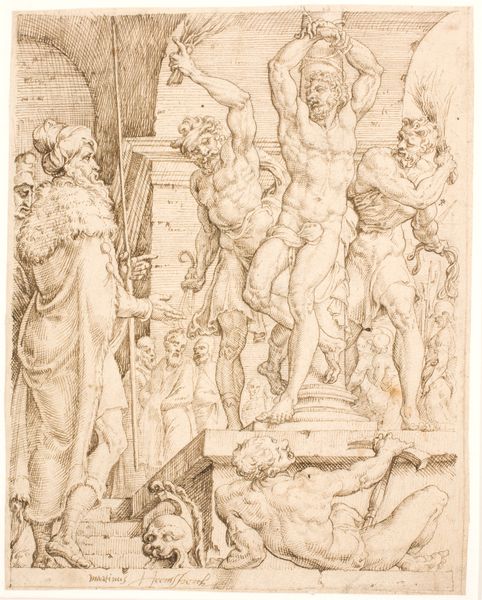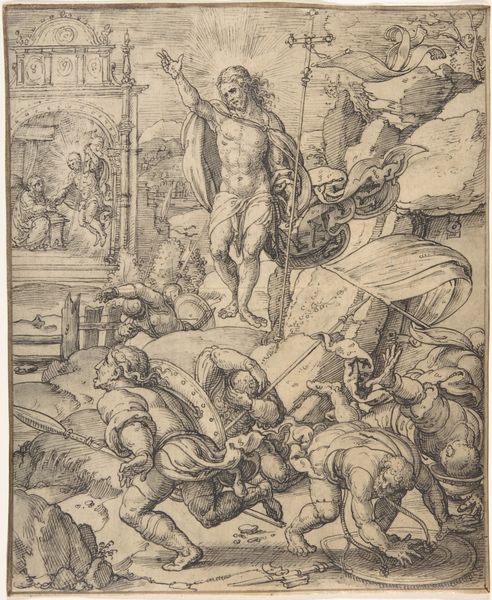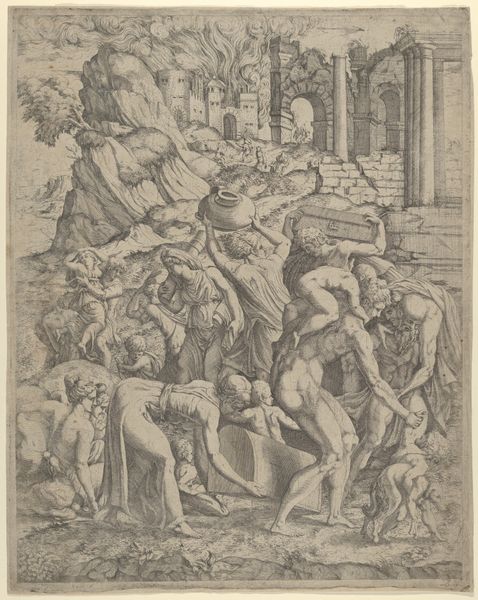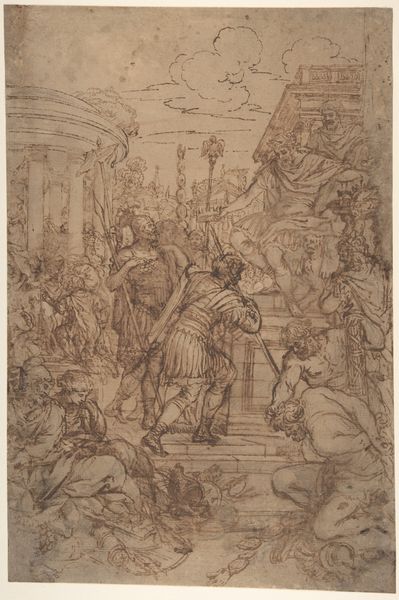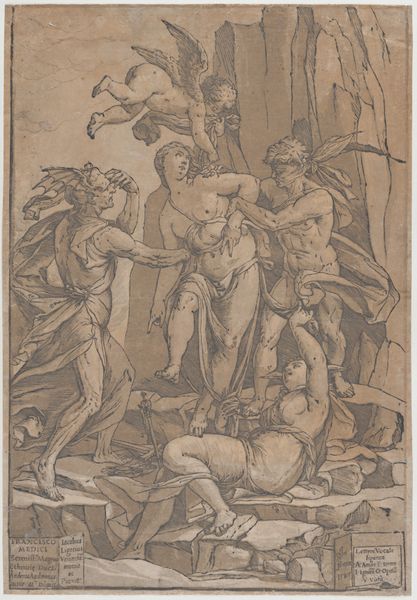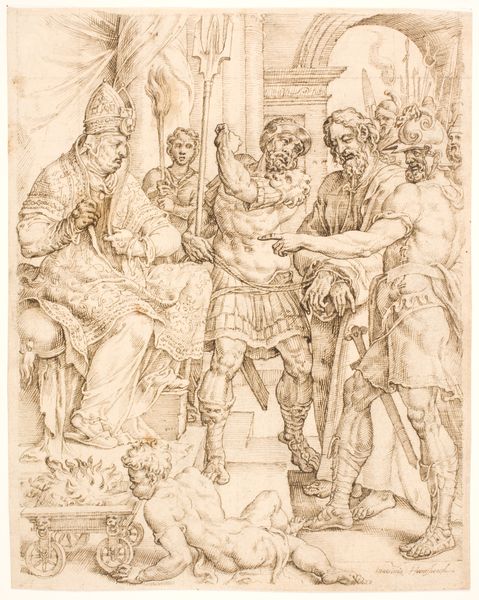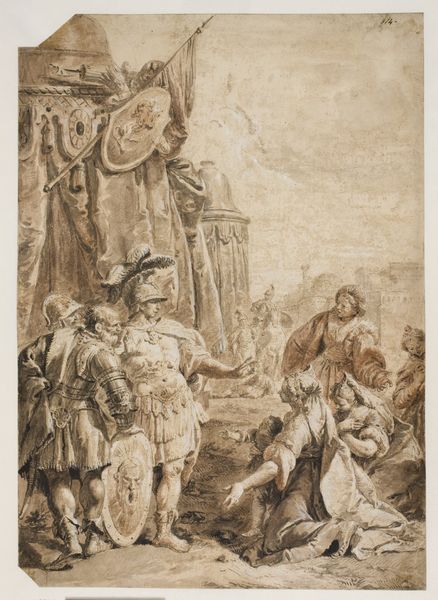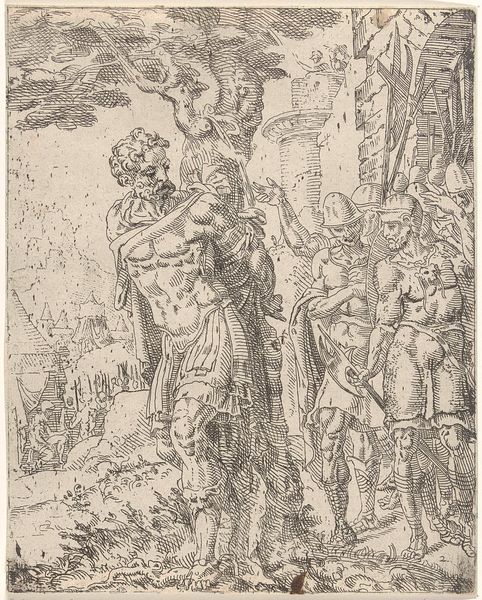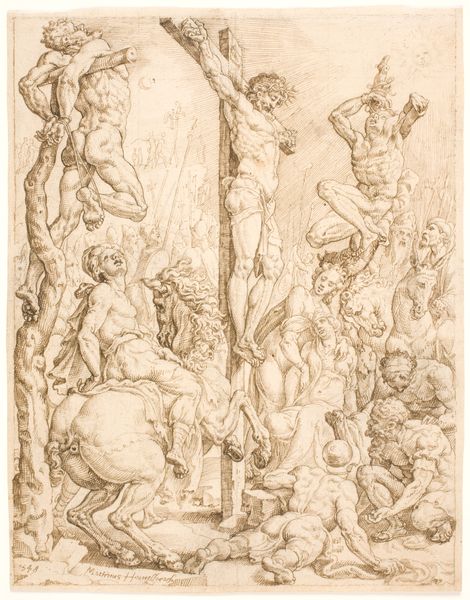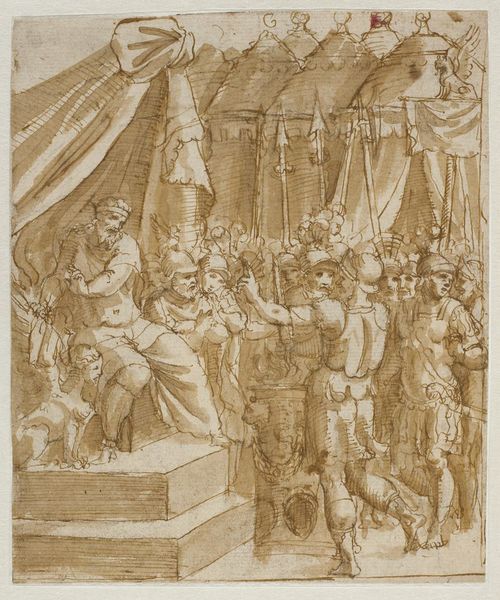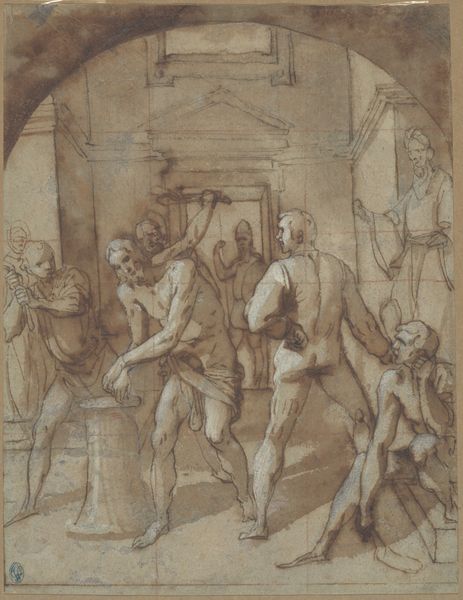
drawing, ink
#
drawing
#
ink painting
#
figuration
#
11_renaissance
#
oil painting
#
ink
#
soldier
#
men
#
history-painting
#
italian-renaissance
Dimensions: 19 3/16 x 14 13/16 in. (48.8 x 37.7 cm) [two pieces joined]
Copyright: Public Domain
Editor: So, this is Taddeo Zuccaro’s "The Martyrdom of Saint Paul," created sometime between 1554 and 1561. It’s an ink drawing, and it feels incredibly dramatic and raw. All those figures packed together, witnessing this… how would you interpret this work, looking at it with a symbolic eye? Curator: It’s a powerful depiction, isn’t it? What strikes me is how Zuccaro uses the Roman soldiers and architectural elements. Consider how classical Roman symbols, meant to represent order and imperial power, are juxtaposed against the chaotic, violent act. Paul's kneeling form isn’t just physical submission; it's a visual representation of faith confronting earthly power. How do you think that contrast resonates today, looking at images of conflict and belief? Editor: That's really insightful. It makes me think about how authority can be both a physical force and an ideological one. The image kind of implies the lasting power of belief despite physical violence. It is fascinating that we still retell such historical accounts today through similar imagery. Do you think that it can give a false impression? Curator: Potentially, if taken literally without context. But, aren't visual symbols, even dramatic ones like this, essential for remembering complex historical events? These images tap into collective cultural memories, allowing each generation to re-engage with historical concepts in fresh ways, filtered through their unique lived experiences. What do you think of that claim? Editor: That does makes sense. It’s almost as if we are destined to continue seeing similar imagery, as long as the conflict between faith and force exists. Curator: Exactly. The cycle of violence and belief. Symbols condense this complex cycle, giving them immense emotional weight that endures through centuries. Editor: I see what you mean! Looking at it now, I understand the purpose behind showing a history painting, despite its discomforting display. Thank you for sharing these perspectives.
Comments
No comments
Be the first to comment and join the conversation on the ultimate creative platform.
